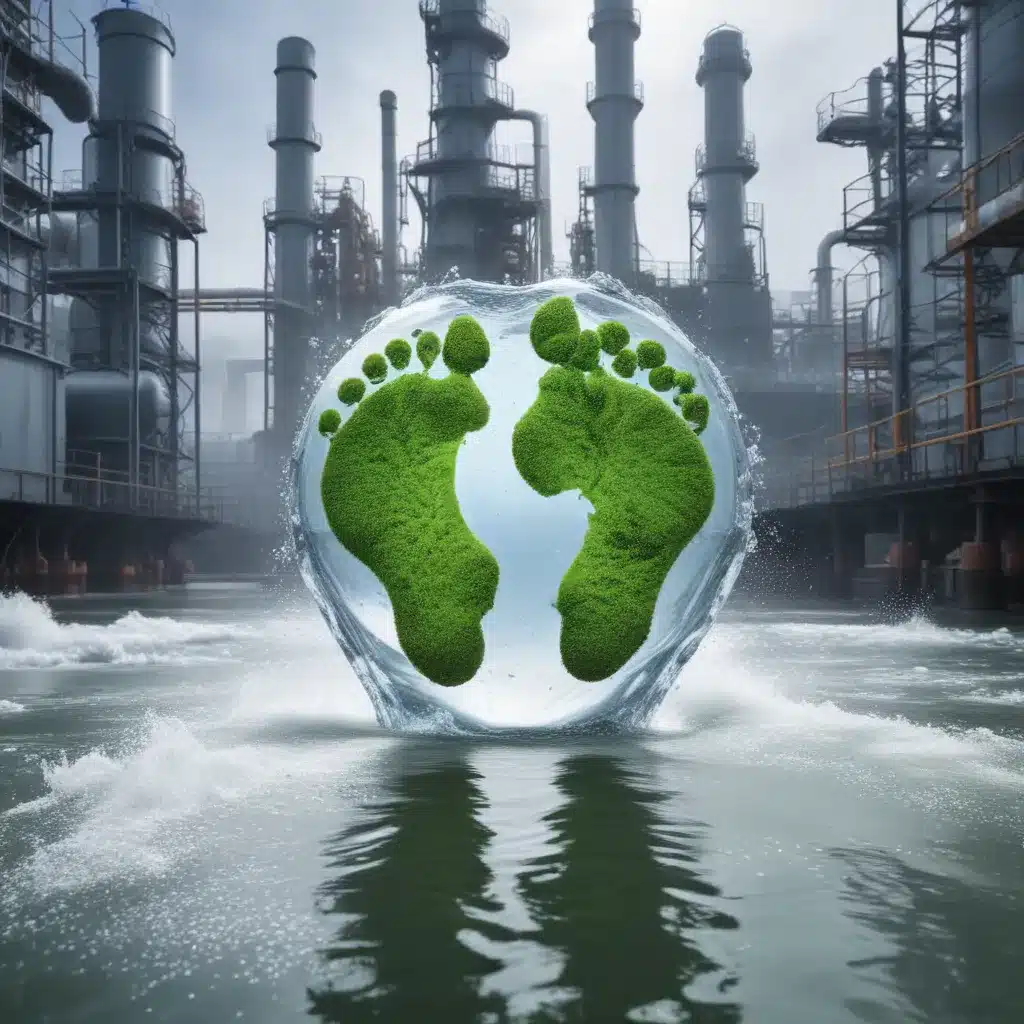
The Need for Sustainable Water Management
Climate change is a pressing global challenge, with greenhouse gas (GHG) emissions contributing to rising temperatures, changing precipitation patterns, and an increase in the frequency and intensity of extreme weather events. These climate impacts directly affect the availability and quality of water resources, which are essential for industrial processes, agricultural production, and domestic use.
Mitigating climate change requires reducing GHG emissions across all sectors, including industry. However, adaptation strategies that build resilience within industrial water systems are also crucial. By reducing their water footprint, industries can not only support climate change mitigation efforts, but also prepare for the uncertain impacts of a changing climate on water availability and quality.
Assessing the Industrial Water Footprint
The water footprint of an industry encompasses the total volume of freshwater used directly and indirectly throughout its operations and supply chain. This includes water consumption for manufacturing, processing, and cleaning, as well as the embedded water used to produce raw materials and energy inputs.
According to the European Environment Agency, the industrial sector accounts for around 40% of total water abstraction in Europe. Water-intensive industries such as mining, chemical production, food and beverage manufacturing, and energy generation have particularly large water footprints that must be addressed.
Conducting a comprehensive water footprint assessment is the first step towards reducing industrial water use. This involves:
- Measuring direct water withdrawal and consumption: Tracking water intake, discharge, and recycling/reuse within an organization’s own facilities.
- Mapping indirect water use: Estimating the embedded water in purchased raw materials, energy, and other supply chain inputs.
- Identifying hotspots: Pinpointing the processes, products, or supply chain activities with the highest water intensity.
By quantifying both direct and indirect water use, industries can gain a holistic understanding of their full water footprint and identify the most impactful areas for intervention.
Strategies for Reducing Industrial Water Footprint
Reducing the water footprint of industry requires a multifaceted approach targeting both supply-side and demand-side solutions. Key strategies include:
Supply-Side Measures
1. Water-Efficient Technologies and Processes
– Upgrading to water-efficient equipment and machinery (e.g., low-flow nozzles, high-pressure washers)
– Implementing process innovations that minimize water use (e.g., dry cleaning, closed-loop systems)
– Investing in water treatment and recycling infrastructure to enable water reuse
2. Improved Water Management Practices
– Conducting regular water audits and monitoring water use
– Implementing leak detection and repair programs
– Optimizing water allocation and scheduling across production lines
3. Industrial Symbiosis and Circular Economy Approaches
– Engaging in collaboration and resource sharing with other industries to enable water reuse and byproduct exchange
– Adopting circular economy principles to recover, recycle, and reuse water throughout the value chain
Demand-Side Measures
1. Product and Process Redesign
– Modifying product designs to reduce water intensity
– Substituting water-intensive raw materials, chemicals, or ingredients with more sustainable alternatives
– Optimizing manufacturing processes to minimize water consumption
2. Supply Chain Engagement and Traceability
– Assessing the water footprint of suppliers and prioritizing those with lower impacts
– Encouraging suppliers to adopt water-saving measures and provide water usage data
– Improving supply chain transparency to identify and address hidden water use
3. Employee Awareness and Behavioral Change
– Implementing water conservation training and incentive programs for staff
– Promoting a “water-conscious” culture through communication and engagement initiatives
Integrating Climate Adaptation
In addition to reducing overall water use, industries must also adapt their water management strategies to be resilient against the impacts of climate change. This may involve:
- Diversifying water sources: Tapping into alternative water supplies such as wastewater, stormwater, or desalinated seawater to reduce reliance on freshwater.
- Enhancing water storage and backup systems: Building storage capacity and redundancy to buffer against water shortages or supply disruptions.
- Improving water quality management: Investing in advanced treatment technologies to handle changing water quality and potential contamination.
- Integrating climate risk assessments: Conducting vulnerability assessments and stress testing water systems against projected climate change scenarios.
By adopting a holistic approach that combines water footprint reduction with climate adaptation measures, industries can significantly enhance their resilience and contribute to broader climate change mitigation efforts.
Enabling Conditions for Successful Implementation
The successful implementation of industrial water footprint reduction strategies requires supportive policies, regulations, and collaboration across multiple stakeholders:
Policy and Regulatory Frameworks
- Establishing water pricing schemes and withdrawal limits to incentivize water conservation
- Implementing mandatory water reporting and efficiency standards for industries
- Providing fiscal incentives and subsidies for the adoption of water-saving technologies
Cross-Sectoral Partnerships
- Fostering collaboration between industries, governments, and civil society organizations
- Facilitating the exchange of best practices, data, and innovative solutions
- Mobilizing public-private investment for water infrastructure and R&D
Knowledge Sharing and Capacity Building
- Developing training programs and technical assistance for industrial water management
- Improving data collection, monitoring, and information sharing on industrial water use
- Supporting research and development of next-generation water-efficient technologies
By creating an enabling environment that aligns policy, industry, and community interests, the full potential of industrial water footprint reduction can be realized, contributing to both climate change mitigation and adaptation.
Conclusion
Reducing the water footprint of industry is a critical strategy for addressing the intertwined challenges of climate change, water scarcity, and environmental sustainability. Through the adoption of water-efficient technologies, process innovations, and climate-resilient water management practices, industries can significantly lower their water use and GHG emissions, while also enhancing their ability to adapt to the impacts of a changing climate.
Achieving this transformation requires a coordinated effort involving policymakers, industry leaders, and community stakeholders. By fostering enabling conditions that support industrial water stewardship, we can unlock the full potential of the private sector to contribute to a more sustainable and resilient future. The Joint Action for Water blog is committed to sharing these stories of innovative water management and climate action, inspiring others to follow suit.

